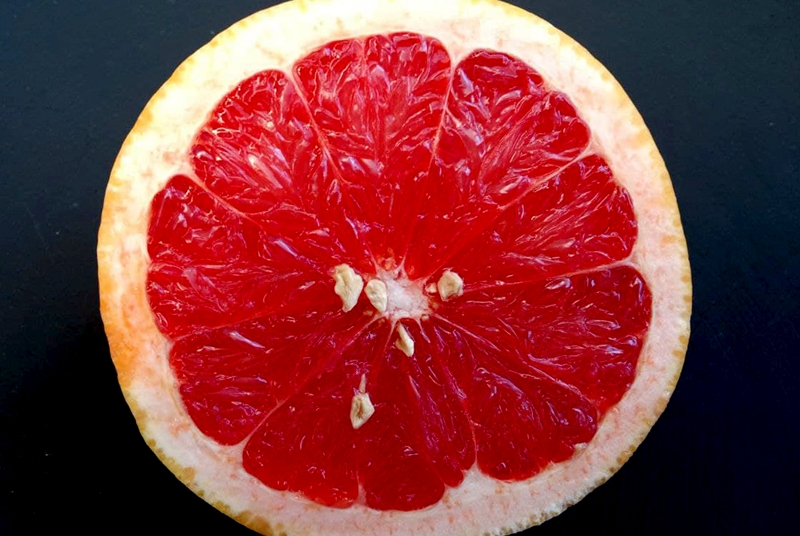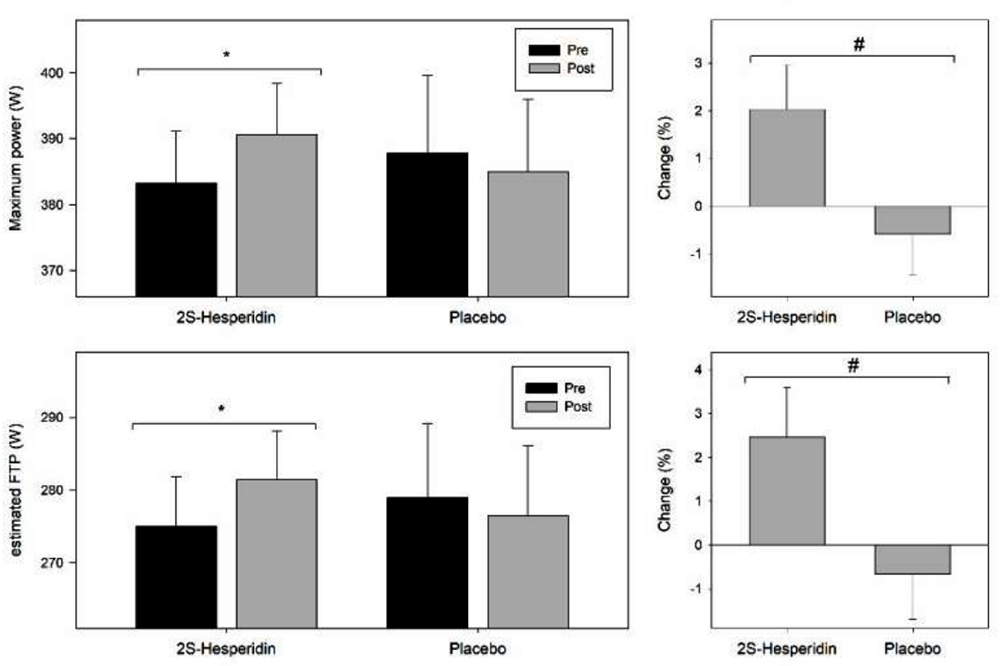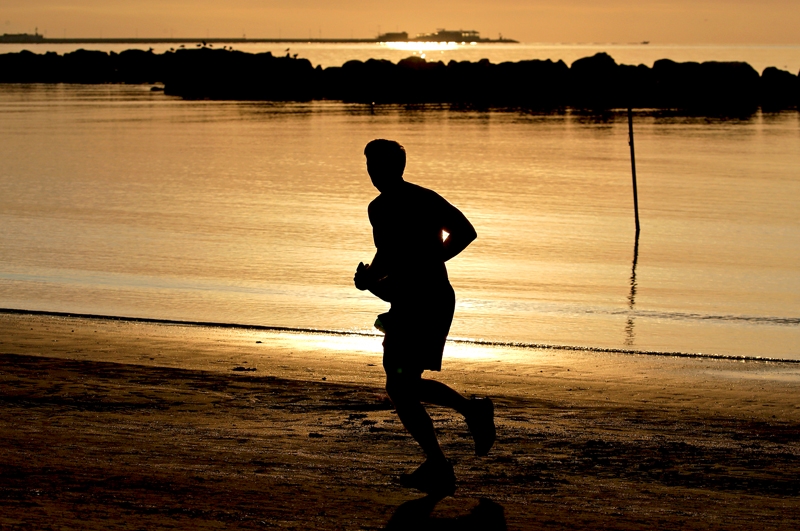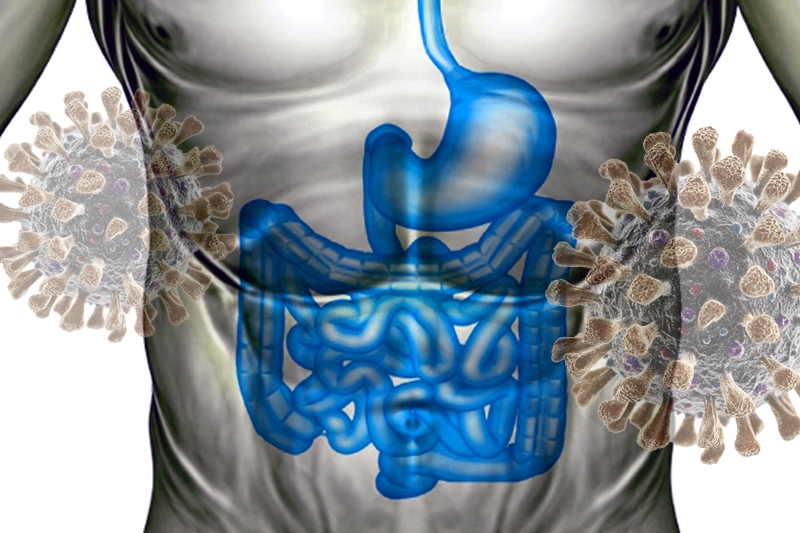Citrus power for health and performance?

SPB looks at new research on the potential performance benefits of a naturally occurring antioxidant called hesperidin
The importance of good antioxidant nutrition for health and longevity cannot be overstated. A large body of research has now confirmed that regularly consuming higher levels of naturally occurring plant antioxidants in the diet – so-called ‘phytochemicals’ found in brightly colored fruits and vegetables – is associated with increased longevity and a reduction in the incidence of degenerative diseases such as heart disease and cancer(1).
More recently, there’s been a growing interest in the use of certain antioxidant phytochemicals known as ‘anthcyanins’ and ‘proanthocyanins’ such as those founds in blackberries, raspberries, blueberries, blackcurrants, redcurrants and cherries to reduce muscle damage and enhance athletic performance(2-4) – something that we have reported on in a previous SPB article focusing on antioxidant nutrition (see here). Other naturally occurring antioxidants that may have particular health benefits for athletes include quercitin (found in apples – see here) and flavanols (for example found in dark chocolate – see here).
New kid on the block
There are literally hundreds and hundreds of natural phytochemical antioxidants in the fruits and vegetables we eat many of which have not been investigated for their possible benefits. However, one nutrient that is attractive increasing attention from scientists is a compound called ‘hesperidin’. Hesperidin is a bioflavonoid antioxidant - a type of plant pigment with antioxidant and anti-inflammatory effects, and which is found primarily in citrus fruit. Oranges (particularly red or ‘blood’ oranges), grapefruits, lemons, and tangerines all contain significant amounts of hesperidin, which is also available in supplement form.Hesperidin is purported to provide a wide range of health benefits, and is currently being investigated as a therapeutic for a number of conditions ranging from heart disease, to various types of cancer, to gut and liver health, and even as a possible antiviral nutrient, which may help provide immune support in diseases such as Covid-19(5). However, since research into hesperidin is in its relative infancy, it’s important to understand that not all of these purported benefits are yet supported by high-quality, robust evidence(6).
Hesperidin for performance
Given that hesperidin has only recently attracted attention for scientists, it’s not surprising that there is relatively little data in the literature regarding its potential to enhance performance. The first acute effects study in athletes investigating hesperidin was carried out as recently as 2019(7). In this study, researchers administered a single 500mg dose of hesperidin or an inert placebo to trained cyclists before high-intensity cycling trial. The results showed that, compared to placebo, hesperidin-supplemented cyclists significantly improved average power (2.3%), maximum speed (3.2%) and total work performed (2.6%) in a repeated sprint test.Another intriguing study on hesperidin and cycling performance in amateur cyclists was published at the back end of last year the journal ‘Nutrients’(8). In this study, Spanish researchers investigated a continual (chronic) intake of hesperidin for a period of eight weeks. The hesperidin type used was that from an orange extract (2S-hesperidin). Importantly, this trial was double-blind, randomized, placebo-controlled and used a rather larger number of participants (40) than is often the case, which means the findings can be considered reasonably robust.
Forty amateur cyclists were randomized into two groups: one taking 500mg/day 2S-hesperidin and the other taking 500mg/day of an inert placebo (microcellulose) for eight weeks. Before and after the 8-week supplementation period, the cyclists were assessed both in terms of key performance indicators and for markers of metabolism. In particular, an incremental test was used to evaluate performance, and a step test was used to measure oxygen consumption, and the how efficiently the cyclists were using fats and carbohydrates for fuel. In addition, the cyclists’ levels of anaerobic power were determined using incremental ‘Wingate tests’. The key findings were as follows:
- After eight weeks supplementation, there was an increase of 3.2% in the incremental functional threshold power (FTP) in the hesperidin-supplemented cyclists compared to placebo (see figure 1).
- Likewise, the hesperidin-supplemented cyclists increased their maximum power outputs compared to the placebo group – by an average of 2.7% (see figure 1 also).
Figure 1: Effects of eight weeks of 2S-hesperidin supplementation vs. placebo

Top = maximum power; bottom = functional threshold power. Bar charts on right hand side show (significant) changes (%) in performance with improvements in hesperidin compared to placebo.
Muscle mass and body fat
Spurred on by their positive findings, the same group of scientists investigated whether 2S-hesperidin could provide other benefits for athletes – specially improving body composition. Although favorable body composition effects (increased muscle mass, reduced body fat) have been reported in animal models, these claims have not been rigorously investigated in humans. To look into this further, the researchers carried out a study on amateur cyclists using the same format - ie who took wither 500mgs of 2S-heseridin or an inert placebo for eight weeks - while maintaining their normal levels of activity(9).The cyclists were divided into two groups of 20 (hesperidin and placebo), and both groups underwent Dual-Energy X-ray Absorptiometry (DXA – a highly accurate way of determining body composition), along with anthropometric measurements to assess the effect of both treatments on body composition. These assessments were completed both before and after the 8-week period of supplementation. The key findings were as follows:
- Using the DXA and anthropometric analyses, the hesperidin-supplemented cyclists showed a decline in overall body far percentage of 3.7% compared to the placebo group, with even greater reductions when measured in the legs.
- Additionally, there was an increase in muscle mass percentage of 1.0% and increase in total muscle mass of 1.7% in the 2S-hesperidin group, with no changes in placebo.
Implications for athletes
On the face of it, these findings (along with other studies on non-athletes) seem very promising. But as ever, caution is required; although these studies were well designed and there is a good theoretical rationale for the benefits of hesperidin in exercise performance (unfortunately beyond the scope of this article), more studies will be needed before we can be certain of the benefits.Having said that, hesperidin is a natural compound that is known to confer health benefits, which means that athletes who wish to experiment with it almost certainly have nothing to lose. The only caveat here is that hesperidin has an anticoagulant effect (ie thinning) on blood(10); athletes who are already taking anticoagulant medication such as aspirin or Warfarin should not take additional hesperidin without first consulting a physician.
Don’t forget too that fresh citrus fruits and their juices are also rich in hesperidin. In particular, fresh orange juice has been reported to contain between 30mg and 130mg of hesperidin on average in an 8-ounce serving, with the highest levels in juices that are extracted under high pressure, where the pith and inner parts of the peel (the parts of oranges that contain the most hesperidin) are also extracted. Consuming these juices therefore can contribute useful amounts of hesperidin to your diet!
References
- Int J Mol Sci. 2020 Feb 13;21(4):1250. doi: 10.3390/ijms21041250
- J Int Soc Sports Nutr. 2016 May 26;13:22
- Int J Sport Nutr Exerc Metab. 2015 Aug;25(4):367-74
- Int J Sport Nutr Exerc Metab. 2015 Oct;25(5):487-93
- Phytother Res. 2021 Mar;35(3):1298-1312
- Oxidative Medicine and Cellular Longevity. 2019;2019:1-19 doi.org/10.1155/2019/5484138
- Nutrients. 2019 Aug 14; 11(8)
- Nutrients. 2020 Dec 21;12(12):3911. doi: 10.3390/nu12123911
- Food Funct. 2021 May 11;12(9):3872-3882. doi: 10.1039/d0fo03456h
- Molecules. 2011 Feb 7;16(2):1378-88
You need to be logged in to continue reading.
Please register for limited access or take a 30-day risk-free trial of Sports Performance Bulletin to experience the full benefits of a subscription. TAKE A RISK-FREE TRIAL
TAKE A RISK-FREE TRIAL
Newsletter Sign Up
Testimonials
Dr. Alexandra Fandetti-Robin, Back & Body Chiropractic
Elspeth Cowell MSCh DpodM SRCh HCPC reg
William Hunter, Nuffield Health
Newsletter Sign Up
Coaches Testimonials
Dr. Alexandra Fandetti-Robin, Back & Body Chiropractic
Elspeth Cowell MSCh DpodM SRCh HCPC reg
William Hunter, Nuffield Health
Keep up with latest sports science research and apply it to maximize performance
Today you have the chance to join a group of athletes, and sports coaches/trainers who all have something special in common...
They use the latest research to improve performance for themselves and their clients - both athletes and sports teams - with help from global specialists in the fields of sports science, sports medicine and sports psychology.
They do this by reading Sports Performance Bulletin, an easy-to-digest but serious-minded journal dedicated to high performance sports. SPB offers a wealth of information and insight into the latest research, in an easily-accessible and understood format, along with a wealth of practical recommendations.
*includes 3 coaching manuals
Get Inspired
All the latest techniques and approaches
Sports Performance Bulletin helps dedicated endurance athletes improve their performance. Sense-checking the latest sports science research, and sourcing evidence and case studies to support findings, Sports Performance Bulletin turns proven insights into easily digestible practical advice. Supporting athletes, coaches and professionals who wish to ensure their guidance and programmes are kept right up to date and based on credible science.









